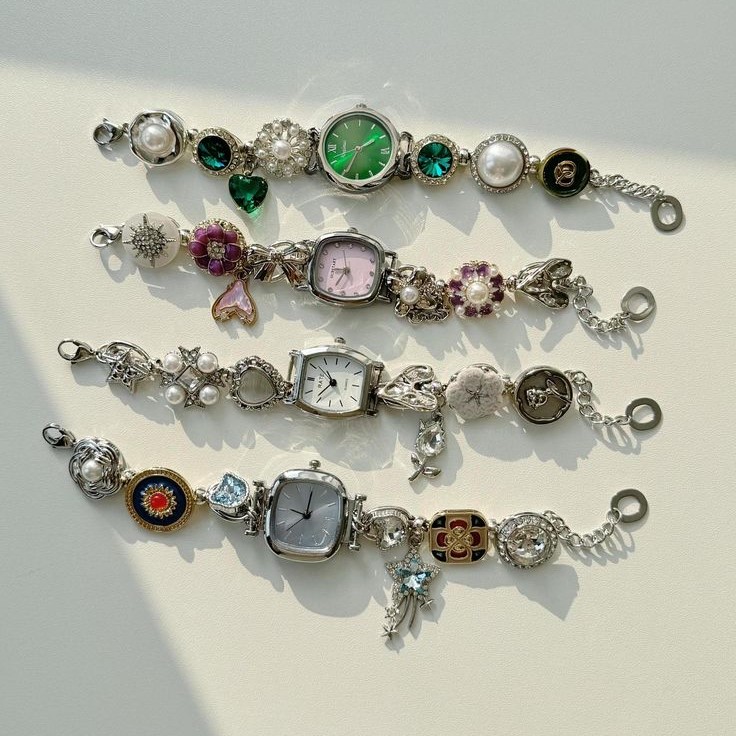Introduction
If you’ve ever wondered how automatic watches work, you’re not alone. These timepieces are marvels of engineering that combine precision with elegance. Unlike quartz watches powered by batteries, automatic watches rely on the wearer’s motion to generate power. This makes them both sustainable and timeless. Understanding their inner workings opens a door to the world of horology—a craft steeped in tradition yet constantly evolving.
In this guide, we’ll break down the mechanics of automatic watches step by step. Whether you’re a beginner or an enthusiast looking to deepen your knowledge, there’s something here for everyone. Let’s dive in and uncover the magic behind these intricate devices.
What Is an Automatic Watch?
To start, let’s define what an automatic watch is, how automatic watches work. Simply put, it’s a type of mechanical watch that winds itself through the natural movement of the wearer’s wrist. Also known as self-winding watches, they eliminate the need for manual winding while maintaining accuracy.
The key component of an automatic watch is the rotor—a weighted disc that spins freely inside the case. When the wearer moves their arm, the rotor swings back and forth, transferring energy to the mainspring via gears. This stored energy powers the watch’s movement until the spring unwinds completely. If left untouched for too long, the watch will stop running. However, most modern models feature power reserves lasting 36-48 hours or more.
This seamless integration of mechanics and human activity explains why automatic watches remain so popular among collectors and everyday wearers alike.
Key Components of an Automatic Watch Movement
Understanding how automatic watches work requires familiarity with their core components. Here’s a closer look at each part:
- Rotor: As mentioned earlier, the rotor plays a central role in winding the mainspring. Modern designs use bi-directional rotors, meaning they can wind the spring regardless of the direction of movement.
- Mainspring: This coiled spring stores potential energy when wound by the rotor. It gradually releases this energy to drive the watch’s functions.
- Gear Train: A series of interconnected gears transmits energy from the mainspring to the escapement mechanism. Each gear has a specific purpose, ensuring smooth operation.
- Escapement: Often called the “heart” of the watch, the escapement regulates the release of energy from the mainspring. Without it, the watch would run uncontrollably fast.
- Balance Wheel: This oscillating component controls the speed of ticking. Its consistent vibrations determine the accuracy of the timekeeping.
Each of these parts works together harmoniously, creating a symphony of motion within the tiny confines of the watch case.

The History of Automatic Watches
How automatic watches work? Before exploring further, it’s worth noting the historical significance of automatic watches. The first self-winding mechanism was invented in 1770 by Swiss watchmaker Abraham-Louis Perrelet. Over two centuries later, Japanese manufacturer Seiko revolutionized the industry with its Kinetic line, blending quartz accuracy with mechanical charm.
Today, advancements in materials science and manufacturing techniques have made automatic watches more accessible than ever. Titanium cases, sapphire crystals, and skeleton dials showcase the artistry behind these creations. Transitioning from past innovations to present-day designs highlights just how far horology has come.
Modern brands continue to push boundaries with new technologies like ceramic bezels, silicon balance springs, and anti-magnetic movements. These innovations ensure that automatic watches stay relevant in a world dominated by smartwatches and digital displays.
Benefits of Owning an Automatic Watch
Why choose an automatic watch over other types? There are several reasons:
- Sustainability: No batteries mean less waste and environmental impact.
- Craftsmanship: Each automatic watch tells a story of skilled artisans who meticulously assemble hundreds of tiny parts.
- Accuracy: While not as precise as atomic clocks, high-quality automatic watches maintain impressive levels of accuracy.
- Pride of Ownership: Wearing one connects you to a legacy of innovation and tradition.
These benefits explain why many people prefer automatic watches despite the availability of cheaper alternatives. Additionally, owning one fosters appreciation for the art of watchmaking. For instance, seeing the intricate gears move through a transparent case back adds a layer of fascination that no digital screen can replicate.

Maintenance Tips for Your Automatic Watch
To ensure longevity, proper care is essential. Here are some tips:
- Regular Use: Keep your watch active by wearing it daily. If unused for extended periods, store it in a watch winder to prevent the oil from solidifying.
- Professional Servicing: Schedule cleanings every 3-5 years to replace worn-out parts and refresh lubrication.
- Avoid Extreme Temperatures: Heat or cold can damage delicate components like the balance spring.
- Water Resistance: Even water-resistant watches should be checked periodically to confirm seals remain intact.
By following these guidelines, you extend the life of your timepiece and preserve its value. Proper maintenance also ensures your watch continues to tick accurately and reliably for years to come.
Comparing Automatic Watches to Quartz and Manual Models
While automatic watches offer numerous advantages, they aren’t perfect for everyone. Let’s compare them to quartz and manual mechanical watches:
- Quartz Watches: Powered by batteries, quartz watches are incredibly accurate and low-maintenance. However, they lack the emotional connection associated with mechanical pieces.
- Manual Mechanical Watches: Require daily winding but often boast superior craftsmanship and longer power reserves. They appeal to purists who enjoy hands-on interaction.
- Automatic Watches: Strike a balance between convenience and authenticity. Their ability to wind themselves makes them ideal for those seeking ease without sacrificing quality.
Choosing the right type depends on personal preferences and lifestyle needs. For example, someone who travels frequently might appreciate the hassle-free nature of quartz watches, while a collector may gravitate toward the exclusivity of manual mechanical models.
Advanced Features in Modern Automatic Watches
In addition to basic timekeeping, many automatic watches now include advanced features that enhance functionality and appeal. Some examples include:
- Chronograph Functions: Allow users to measure elapsed time with stopwatch-like precision.
- Date Displays: Provide quick reference for calendar tracking.
- GMT Complications: Enable tracking of multiple time zones simultaneously, perfect for global travelers.
- Power Reserve Indicators: Show how much energy remains before the watch stops running.
These additional complications add layers of complexity and utility, making automatic watches versatile tools rather than mere accessories. Brands like Rolex, Omega, and Seiko excel in integrating such features seamlessly into their designs.
Common Misconceptions About Automatic Watches
Myth: You Must Shake Your Watch Regularly to Keep It Running
Many people believe that automatic watches require frequent shaking to maintain power, but this is a misconception.
Reality: The kinetic energy generated by normal wrist movement during daily activities is enough to keep the watch running smoothly. Excessive shaking isn’t just unnecessary—it can actually harm the delicate internal mechanisms over time.

Modern automatic watches are designed with highly efficient rotor systems that maximize energy conversion from even subtle movements, ensuring consistent performance without requiring extra effort.
Myth: Automatic Watches Are Always More Accurate Than Quartz Ones
Some enthusiasts assume that mechanical watches, including automatics, outperform quartz watches in terms of accuracy.
Reality: Quartz watches typically offer superior precision because they rely on electronic oscillators regulated by quartz crystals, which vibrate at an incredibly stable frequency.
While high-end automatic watches strive for accuracy, variations in temperature, position, and wear patterns can affect their performance. On average, most automatic watches gain or lose a few seconds per day, whereas quartz watches often achieve near-perfect accuracy.
Myth: All Automatic Watches Are Waterproof
A common assumption is that all automatic watches come with built-in water resistance, making them safe for swimming or diving.
Reality: Water resistance levels vary significantly depending on the model and design. Not all automatic watches are suitable for exposure to moisture. For instance, dress watches may only be splash-resistant, while dive watches are engineered to withstand deep submersion.
Buyers should always review the specifications provided by manufacturers to understand the exact water resistance rating (measured in ATM or meters) and avoid accidental damage.
Myth: Automatic Watches Never Require Manual Winding
Another widespread belief is that once you start wearing an automatic watch, you’ll never need to manually wind it again.
Reality: If the watch remains stationary for extended periods—such as when stored overnight or during vacations—the mainspring will eventually unwind, causing the watch to stop.
To prevent this, occasional manual winding is recommended to ensure the watch stays powered and accurate. Additionally, using a watch winder can help maintain the movement if the watch isn’t worn regularly.
Myth: Automatic Watches Are Maintenance-Free
Some users think that because automatic watches don’t use batteries, they don’t require any maintenance.
Reality: Like any mechanical device, automatic watches need periodic servicing to function optimally. Over time, lubricants dry out, dust accumulates, and parts wear down, affecting performance.
Manufacturers generally recommend professional servicing every 3-5 years to clean, replace worn components, and re-lubricate the movement, ensuring longevity and reliability.
Myth: Cheaper Automatic Watches Perform Just as Well as Expensive Ones
There’s a perception that all automatic watches perform equally well regardless of price.
Reality: Higher-priced automatic watches often feature superior craftsmanship, higher-quality materials, and advanced technology, such as anti-magnetic properties, shock resistance, and enhanced durability.
Investing in a premium automatic watch usually means better accuracy, longer lifespan, and more refined aesthetics, though budget-friendly options can still provide satisfactory performance for casual use.
By addressing these common misconceptions, potential buyers can make more informed decisions about purchasing and maintaining automatic watches. Understanding the realities behind these myths helps set realistic expectations and ensures greater satisfaction with their chosen timepiece.

Conclusion: Mastering the Art of Timekeeping
In summary, understanding how automatic watches work empowers you to appreciate their complexity and beauty fully. From the spinning rotor to the oscillating balance wheel, every detail contributes to their functionality and allure.
Whether you’re drawn to their eco-friendly nature, artistic design, or historical significance, automatic watches hold a special place in the world of horology. By applying the knowledge gained here, you’ll become a more informed collector or buyer—and perhaps even inspire others to join this fascinating journey. With proper care and appreciation, your automatic watch can serve as a lifelong companion, ticking away the moments of your days with grace and precision.

